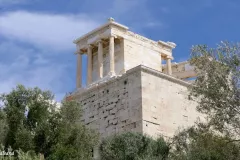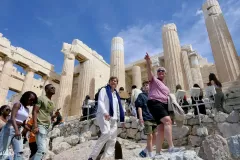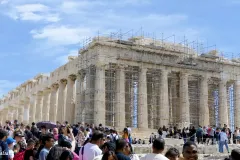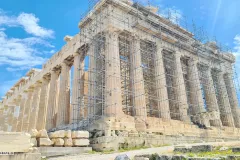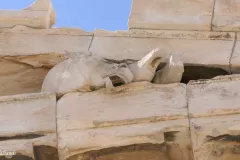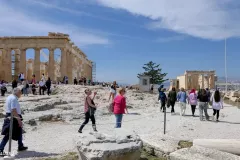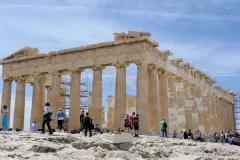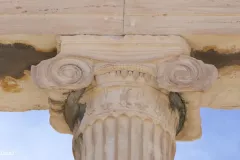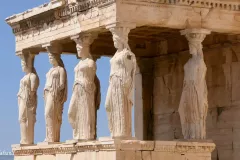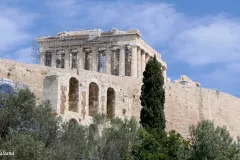The Acropolis of Athens has been on my bucket list for as long as I can remember. Getting there was a huge relief. I had finally reached the cradle of democracy.
The UNESCO World Heritage List includes over a thousand properties. They have outstanding universal value and are all part of the world’s cultural and natural heritage.
Official facts
- Country: Greece
- Date of Inscription: 1987
- Category: Cultural
UNESCO’s World Heritage Centre’s short description of site no. 0404:
The Acropolis of Athens and its monuments are universal symbols of the classical spirit and civilization and form the greatest architectural and artistic complex bequeathed by Greek Antiquity to the world. In the second half of the fifth century bc, Athens, following the victory against the Persians and the establishment of democracy, took a leading position amongst the other city-states of the ancient world.
In the age that followed, as thought and art flourished, an exceptional group of artists put into effect the ambitious plans of Athenian statesman Pericles and, under the inspired guidance of the sculptor Pheidias, transformed the rocky hill into a unique monument of thought and the arts. The most important monuments were built during that time: the Parthenon, built by Ictinus, the Erechtheon, the Propylaea, the monumental entrance to the Acropolis, designed by Mnesicles and the small temple Athena Nike.
UNESCO also writes that the Acropolis of Athens is the most striking and complete ancient Greek monumental complex still existing in our times. It is situated on a hill of average height (156m) that rises in the basin of Athens. Its overall dimensions are approximately 170 by 350m. The hill is rocky and steep on all sides except for the western side, and has an extensive, nearly flat top. Strong fortification walls have surrounded the summit of the Acropolis for more than 3,300 years.
My visit
There are many hills in Athens. One of them is Lycabettis. It is a favourite of many who want to see the sun go down over the Greek capital. From this hill, there is also a very good view of the Acropolis. The next day I ascended the Acropolis. The entrance is to the west, in front of a much smaller hill called Areopagus. It is also a popular viewpoint, and perhaps even more spectacular because it is so nearby.
On my visit during the Easter week of 2023, I was not the only visitor to the Acropolis. I had bought the entrance ticket online, so at least I managed to avoid one of the long queues. Once past the entrance, I followed the stream of groups and individuals to a point overlooking the ancient theatre. It is called the Odeon of Herodes Atticus. It is possible to go down to the theatre and to continue along the south slope of the hill. I was perhaps a bit too impatient and decided to climb the steps to the top of the hill right away. The tour groups had set down on the steps below the gate for a small lecture from their guide.
For my part, I continued up the stairs and suddenly, I was there. I had reached the top of the Acropolis and was facing the large Parthenon straight ahead. It was a breath-taking sight. The next hour or so I spent walking around the plateau, taking in the impressions of three thousand years of human history.
The Acropolis museum
After I left the hill, I walked down the wide road on the southern side to the Acropolis Museum. It is arguably a necessary combination with a visit to the hill itself. This museum concentrates solely on archaeological findings from the Acropolis, it is very modern and instructive. In conclusion, the information you did not get on the hill itself, or the questions you asked yourself and never got a proper reply to, you will find here.




